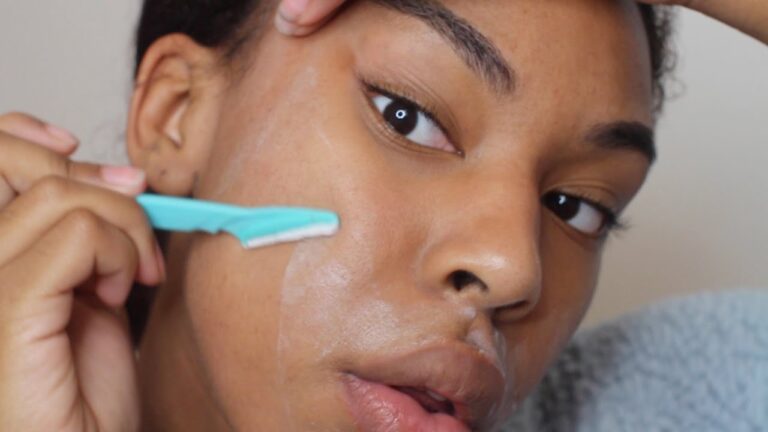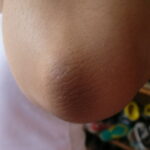how do I get rid of them?
We all have hair. It grows on our head, and on our skin. Basically, hair follicles are present in all parts of our skin except our soles, lips and toes, hair follicles.
The hair growth from the follicle on some parts of our body can be so minute that it often goes unnoticed, and this inconspicuous kind of hair is known as “vellus hair”. In other areas of our skin, noticeable hairs exist, and these kind are darker and thicker; they are referred to as ‘terminal hairs’.
Men have a lot of facial terminal hairs, especially in the chin and neck regions, while this is not so for women, although there are rare exceptions. Women who have excess terminal facial hair are usually said to have a condition known as hypertrichosis. And this conditionis more common in women of color, from different races across the world. For instance, African women with hypertrichosis often have ingrown hairs which are characterized by bumps and dark marks. They are also known to have several issues of dark discoloration.
In women of Latin descent, hypertrichosis usually appears as peach frizzy mass of hair or as thick dark hair. Whereas, in the case of south Asian women – particularly those of Indian and Pakistani descent – facial hairs are usually thick and dark.
Most cases of hypertrichosisare is hereditary, so an occurrence of excess facial hair growth could be an indication that your mother or aunts have or had the condition. In some other cases, hypertrichosismay be as a result of abnormalities or underlying hormonal processes such as: hypothyroidism, menopause, aging, pregnancy, obesity, polycystic ovary syndrome, head injury, anorexia nervosa and multiple sclerosis.
Also, certain medications may lead to excessive facial hair growth in women. Medications like phenytoin, cyclosporine, acetazolamine, minoxidil and diazodixe for hypertensive treatments, and streptomycin (which is an antibiotic) are among the long and impressive list of such drugs.
How to get rid of excess facial hair
It’s possible that you might not be able to permanently get rid of excess facial hairs, but they can be dissolved, removed or lightened and their production can even be altered, albeit temporarily. The common methods of getting rid of excess facial hair include:
- SHAVING: Shaving should be done at least twice a week, for the effective but temporary removal of thick facial hair in women. However, shaving may cause irritation to the skin and may also produce hairs which can pierce skin with their dark curved and pointed ends. The production of more ingrown hairs may also happen as a result of this very common and simple hair removal technique.
- PLUCKING: This method is commonly used for the removal of hairs from the chin and neck, using tweezers. Plucking can be mildly painful and it can sometimes be ineffective, as tweezers may pierce the hair follicle and can cause inflammation and – in severe cases – damage to the skin in the plucked region. Bumps and dark marks may also surface in those areas of the skin after plucking.
- CUTTING: This process is mildly painless. However, it should only be employed for those relatively long strands of hair that sometimes emerge on the neck, chin or above the lips. Cutting can be done with a small pair of scissors, preferably a mustache scissors. But while doing this, extra care should be taken in order not to cut the skin in the process. One advantage of cutting, however, is that it does not encourage the growth of ingrown hairs.
- WAXING: This method is involves the use of wax to remove excess hair from the upper lip area, and other parts of the body. Following a successful waxing session, the hair will take a relatively long time to grow back but, on the downside, this process is quite painful and the wax may burn your skin.
- USE OF SUGAR AND LEMON JUICE MIXTURE: This is an ancient hair removal method which is native to ancient Greece, Egypt and Mesopotamia. In this process, a mixture of lemon juice and sugar will be rubbed on the part with hair and removed from the root. This method may cause some irritation, however, it is less painful compared to waxing.
- USE OF HAIR REMOVAL CREAMS: Hair removal creams are known as depilatories. They normally contain calcium thioglycolate and barium sulfide; chemicals which dissolve hairs on the surface of the skin. Depilatories are best used for areas with small facial hair growth. However, care must be taken and such products should be used with strict adherence to the directions on their packaging material. The chemicals in these creams may be harsh on some skins, so if you notice any skin irritations or reactions upon usage, you should stop usage immediately.
- ELECTROLYSIS: This is one of the most expensive hair removal methods available today. The process involves the insertion of a needle into the hair follicle. Then, electric current is passed in to destroy the hair and hair follicle. Hair removed through electrolysis will take months to grow back. However, the process may cause redness and scarring of the skin, and it is particularly difficult for use in women with curved follicle.
- LASER HAIR REMOVAL: This is another expensive method of hair removal. It involves the use of lasers to target beams of light in the hair follicle. Those light beams will then heat up and destroy the hair and the follicle. The results of this method, like electrolysis, are long lasting. However, the process can lead to the loss of pigmentation on areas of the skin where it has been applied, as well as darkness on some other areas of the skin.
In conclusion, there are different methods available globally for the removal of facial hairs in women, and this makes it all the more important for women to find out what works best for them and their skin type. For this reason, a dermatologist should be consulted for specific advice and recommendations on what techniques to be used.



